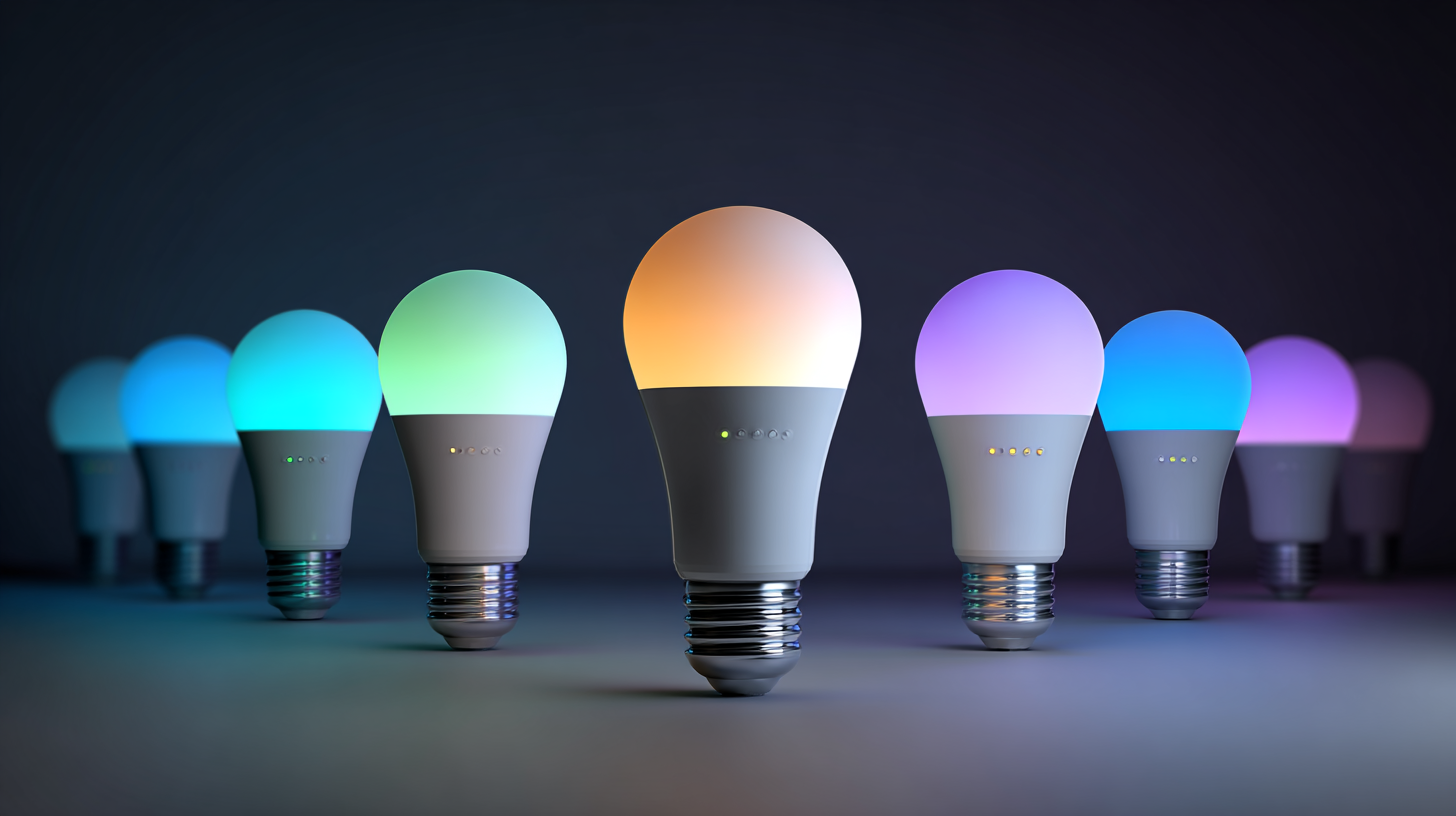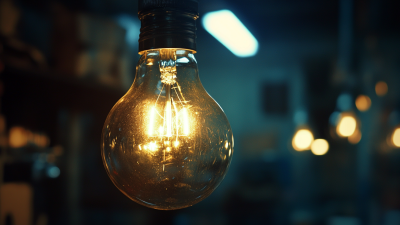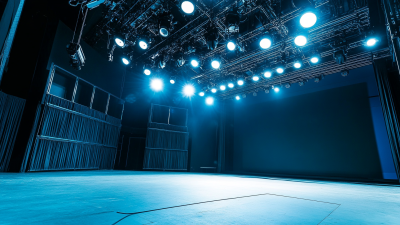Exploring LED Bulbs: Unveiling 2023’s Energy-Efficiency Potential with 80% Reduced Consumption
In recent years, the lighting industry has undergone a significant transformation, with LED bulbs emerging as a pivotal player in the quest for energy efficiency. As we delve into the innovative advancements of 2023, it becomes increasingly clear that LED bulbs have the potential to reduce energy consumption by an astounding 80%.

This remarkable efficiency not only helps to lower electricity bills for consumers but also contributes to broader environmental goals by decreasing carbon emissions. In this guide, we will explore the myriad benefits of switching to LED bulbs, including their longevity, versatility, and reduced environmental impact.
Whether you are a homeowner looking to upgrade your lighting or a business owner seeking sustainable solutions, understanding the advantages and functionalities of LED bulbs will empower you to make informed decisions in the pursuit of a greener future.
Join us as we unveil the energy-efficiency potential of LED technology in 2023 and beyond.
Understanding the Fundamentals of LED Technology and Energy Efficiency
LED technology has revolutionized the lighting industry, primarily due to its remarkable energy efficiency. According to the U.S. Department of Energy, LED bulbs use up to 75% less energy than traditional incandescent bulbs and last at least 25 times longer. This substantial reduction in power consumption not only cuts energy bills for consumers but also significantly lowers the carbon footprint associated with lighting. In 2023, the heightened emphasis on sustainability means that more households and businesses are transitioning to LEDs, realizing the potential for energy savings of nearly 80% compared to older technologies.
The principles behind LED efficiency lie in their unique construction and function. Unlike incandescent bulbs, which generate light through heat, LEDs use a semiconductor to emit light when an electric current passes through it. This process is far more efficient, releasing minimal heat and maximizing light output. Reports from the International Energy Agency indicate that widespread adoption of LED technology could lead to a reduction of global electricity consumption by over 1,700 terawatt-hours annually by 2030, further solidifying LED's standing as a critical player in achieving global energy efficiency goals. As consumers become more informed about these advantages, the shift to LED technology will likely accelerate, marking a significant milestone in energy conservation efforts.
Exploring LED Bulbs: Unveiling 2023’s Energy-Efficiency Potential with 80% Reduced Consumption
| Type of LED Bulb | Wattage (W) | Lumens Output | Estimated Lifespan (Hours) | Energy Savings (%) | Cost per Bulb ($) |
|---|---|---|---|---|---|
| A19 LED Bulb | 9 | 800 | 25000 | 80 | 8 |
| PAR20 LED Bulb | 7 | 500 | 25000 | 85 | 10 |
| BR30 LED Bulb | 10 | 800 | 25000 | 80 | 9 |
| G25 LED Bulb | 10 | 800 | 25000 | 80 | 11 |
Comparing LED Bulbs to Traditional Lighting: Key Differences and Benefits
 When it comes to energy-efficient lighting solutions,
LED bulbs are revolutionizing the way we illuminate our spaces. Unlike traditional incandescent bulbs,
which convert only about 10% of energy into light while the rest is wasted as heat,
LED bulbs offer a remarkable 80% energy reduction.
This not only leads to significant savings on electricity bills but also contributes to a greener environment,
making them an attractive option for eco-conscious consumers.
When it comes to energy-efficient lighting solutions,
LED bulbs are revolutionizing the way we illuminate our spaces. Unlike traditional incandescent bulbs,
which convert only about 10% of energy into light while the rest is wasted as heat,
LED bulbs offer a remarkable 80% energy reduction.
This not only leads to significant savings on electricity bills but also contributes to a greener environment,
making them an attractive option for eco-conscious consumers.
One of the key benefits of LED bulbs is their longevity. While a standard incandescent bulb
might last around 1,000 hours, LED bulbs can last up to 25,000 hours or more.
This means fewer replacements and less waste over time. Additionally, LED technology allows for
instant brightness without the warm-up period often associated with
traditional lighting.
Tips: When selecting LED bulbs, consider the lumens instead of wattage
to determine brightness, and choose bulbs with a color temperature that suits your space's ambiance.
For maximum efficiency, look for dimmable LED options, which can further enhance energy savings
by allowing you to adjust brightness according to your needs.
Maximizing Savings: Tips for Choosing the Right LED Bulbs for Your Home
When selecting LED bulbs for your home, it's crucial to consider energy efficiency and long-term savings. Recent reports indicate that switching to LED lighting can reduce energy consumption by up to 80% compared to traditional incandescent bulbs. This significant reduction not only helps lower your utility bills but also minimizes your carbon footprint, making it an environmentally friendly choice. With the rising cost of living, particularly during winter months, prioritizing energy-efficient lighting solutions is more important than ever.
To maximize savings, focus on lumens rather than watts when choosing LED bulbs. Lumens measure brightness, providing a clearer indication of how much light you're actually getting for your energy expenditure. For instance, a 10-watt LED bulb typically produces about 800 lumens, equivalent to a 60-watt incandescent bulb, but uses a fraction of the energy. Additionally, consider the color temperature of the bulbs; warmer tones tend to create a cozy atmosphere while cooler tones can enhance focus and productivity—ideal for workspaces. By understanding these factors and making informed choices, you can optimize your home's lighting while enjoying significant cost savings.
Installation Tips: How to Effectively Replace and Install LED Bulbs
When replacing traditional incandescent or fluorescent bulbs with LED options, proper installation is key to maximizing energy efficiency and performance. First, ensure that the power is turned off at the circuit breaker before starting the replacement process. This precaution not only protects you from electrical hazards but also prevents any accidental damage to the fixtures.
Carefully remove the old bulb by twisting it counterclockwise in the socket, and store it safely for recycling if local regulations allow.

With modern LED technology, there is often no need for additional transformers or adapters, simplifying the installation process. Finally, restore power at the circuit breaker, and test your new bulb to ensure it operates correctly. By following these steps, you can enjoy enhanced illumination and significant energy savings seamlessly.
Maintaining LED Bulbs: Best Practices for Longevity and Performance
Maintaining LED bulbs is crucial not only for maximizing their lifespan but also for ensuring they perform at their best. According to a report by the Department of Energy, LED bulbs can last up to 25 times longer than traditional incandescent bulbs, with an average lifespan of 15,000 to 50,000 hours. To enjoy these benefits, regular maintenance is essential.
Dust accumulation on the bulb can hinder light output and cause overheating. A simple wipe with a damp cloth every few months keeps the bulbs clean and functional.
Tips for prolonging LED bulb life include using fixtures that allow sufficient airflow, as overheating can significantly reduce their lifespan. Additionally, investing in quality products with reputable certifications—such as ENERGY STAR—can ensure superior performance. It's also advisable to opt for dimmable LED bulbs if your lighting needs vary; they consume less energy when operated at lower settings. With these best practices in place, users can fully harness the energy-saving potential of LED technology.
Related Posts
-

Explore the Benefits of Switching to Energy Efficient LED Light Bulbs Today
-

Maximizing Cost Efficiency with LED Light Bulbs Through Smart Maintenance Strategies
-

Advantageous Features of Embracing Led Bulbs for Sustainable Lighting Solutions
-

Maximize Your Investment with 7 Essential Tips on Repair Costs and After Sales Support for Led Fixtures
-

Illuminate Your Space with Innovative Led Light Fixtures for Every Need
-

Illuminate Your Space with the Versatility of Dimmable LED Light Bulbs

